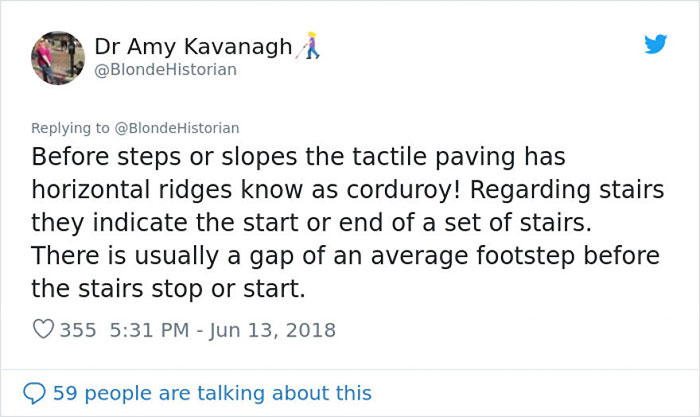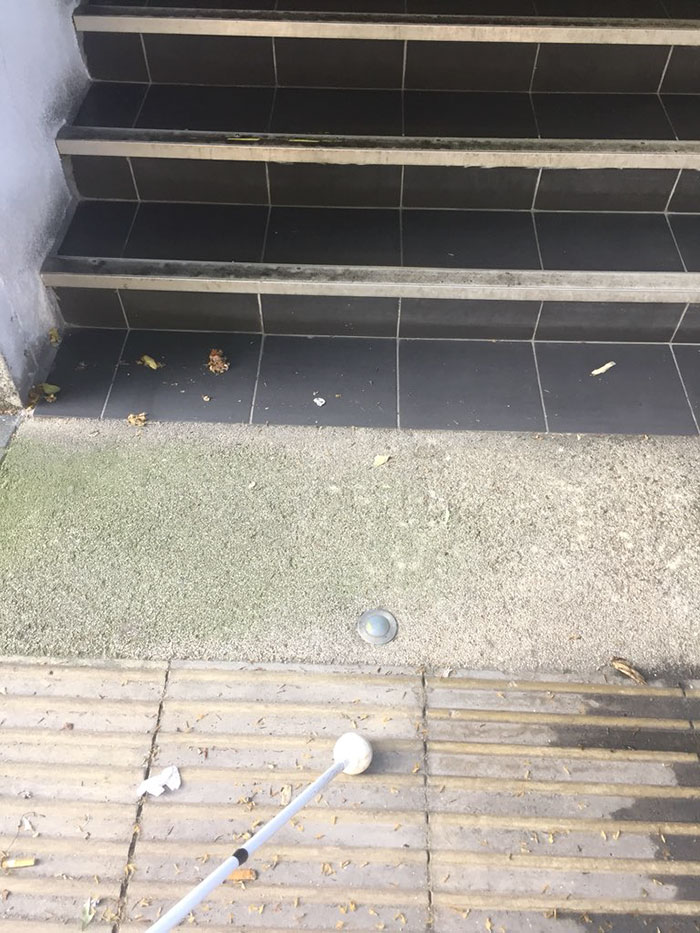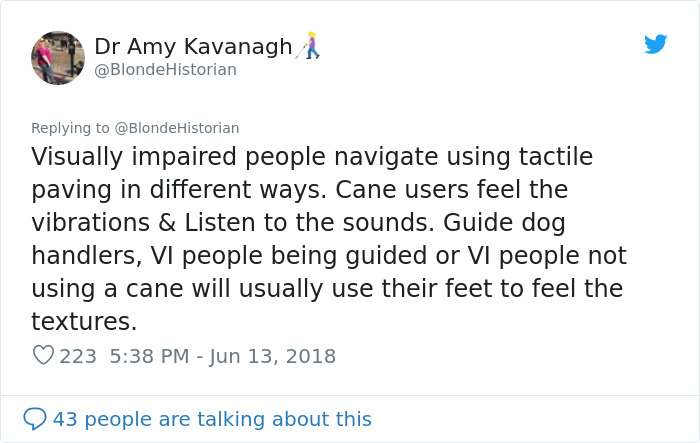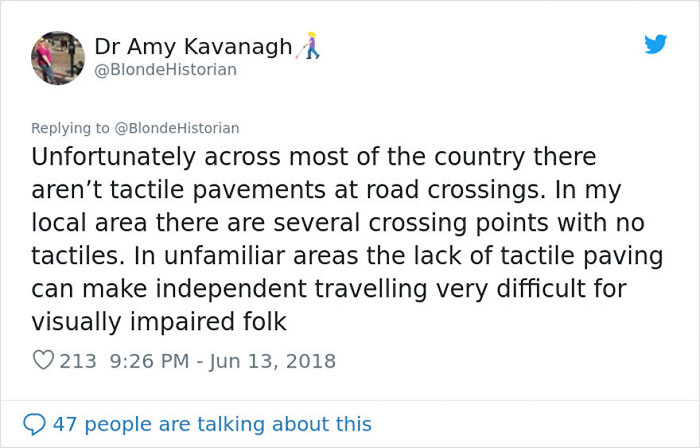In 1965, a man named Seiichi Miyake came up with a groundbreaking idea that was soon to change the lives of millions of people all around the world. This was the year when Seiichi created the first-ever tactile bricks, which have patterns of raised shapes on their surfaces that can be detected by touch, and called this innovation tactile paving. Seiichi was determined to create something like this because he had a good friend who was starting to lose his vision and Seiichi wanted to make his friend’s life at least a little bit easier. This one noble goal singlehandedly changed the way visually impaired people navigate streets in their day-to-day lives.
Even though tactile paving was invented more than 50 years ago, a lot of people to this day have no idea how visually impaired people navigate using it. Fortunately, a visually impaired activist named Amy Kavanagh created a Twitter thread that explains the secret language of tactile pavement in a perfect way.
Bored Panda invites you to carefully examine Amy’s tweets and use this opportunity to educate yourself about visual impairment and the barriers that blind people have to face in their everyday lives.
More info: Twitter | Facebook | caneadventures.blog
Amy begins by telling us about red tactile paving


Image credits: BlondeHistorian
“To deal with the challenges of my daily commute, I rely on something you probably never even noticed before. Like most visually impaired people, I have some useful vision. On a good day, it’s up to a couple of metres in front of me. It’s like being in a bubble. Beyond the bubble life is blurry, wobbly, a mix of shapes and colours,” Amy Kavanagh wrote in her article on BBC News.


Image credits: BlondeHistorian
“On a bad day—when it’s very sunny, I’m tired or stressed—my bubble shrinks. I can’t read my phone or see a traffic light, sometimes everything is just a blur,” Amy wrote in her article. “I was born visually impaired so I’ve always navigated the world differently. Instead of relying on my vision, I use my hearing, sense of smell, and touch, but also my memory.”

On her blog called Cane Adventures, Amy shares that the decision to use a cane was a long, difficult process of self-acceptance. “Using a cane means that you are really accepting that you can’t see and that you do find some things difficult. Initially, it felt like sticking a great big BLIND label on myself, but soon that label didn’t feel at all problematic,” Amy wrote in a post on her blog.


Image credits: BlondeHistorian
“I use a cane technique called constant contact. This means that I sweep my cane along the ground and maintain contact at all times. This enables me to feel changes in the surface, any curbs or steps, as well as tactile paving and it finds objects that I might bump into,” Amy writes on her blog.
And now let’s take a look at the yellow ones


Image credits: BlondeHistorian
“As a new cane user, one of the most important lessons was how to use tactile pavements. Those bumps, lumps and stripes give me so much information, especially on days when my vision is more limited,” Amy writes in her article on BBC News. “Tactile paving is particularly useful at road crossings. The bumpy blister paving not only tells me that there is a road crossing but what kind of crossing to expect.”


Image credits: BlondeHistorian
In her article on BBC News, Amy wrote that the best thing about tactile paving is that it provides visually impaired individuals with clues about the environment they’re in, especially when it’s an unfamiliar one. “It tells me when to be aware of potential hazards, like platform edges or cycle lanes. Without it, I take a lot longer to find my way and often rely more on someone else to help me,” Amy wrote.


Image credits: BlondeHistorian


Image credits: BlondeHistorian
If you notice tactile paving that needs repair, make sure to report it!


Image credits: BlondeHistorian


Image credits: BlondeHistorian
In fact, there are a few different ways to navigate using tactile paving

Image credits: BlondeHistorian
One more note—before proceeding to help a visually impaired individual, make sure that they actually need help

Image credits: BlondeHistorian
And as with everything, there’s still a lot of improvement to do


Image credits: BlondeHistorian
from Bored Panda https://ift.tt/2YFCHky

No comments:
Post a Comment